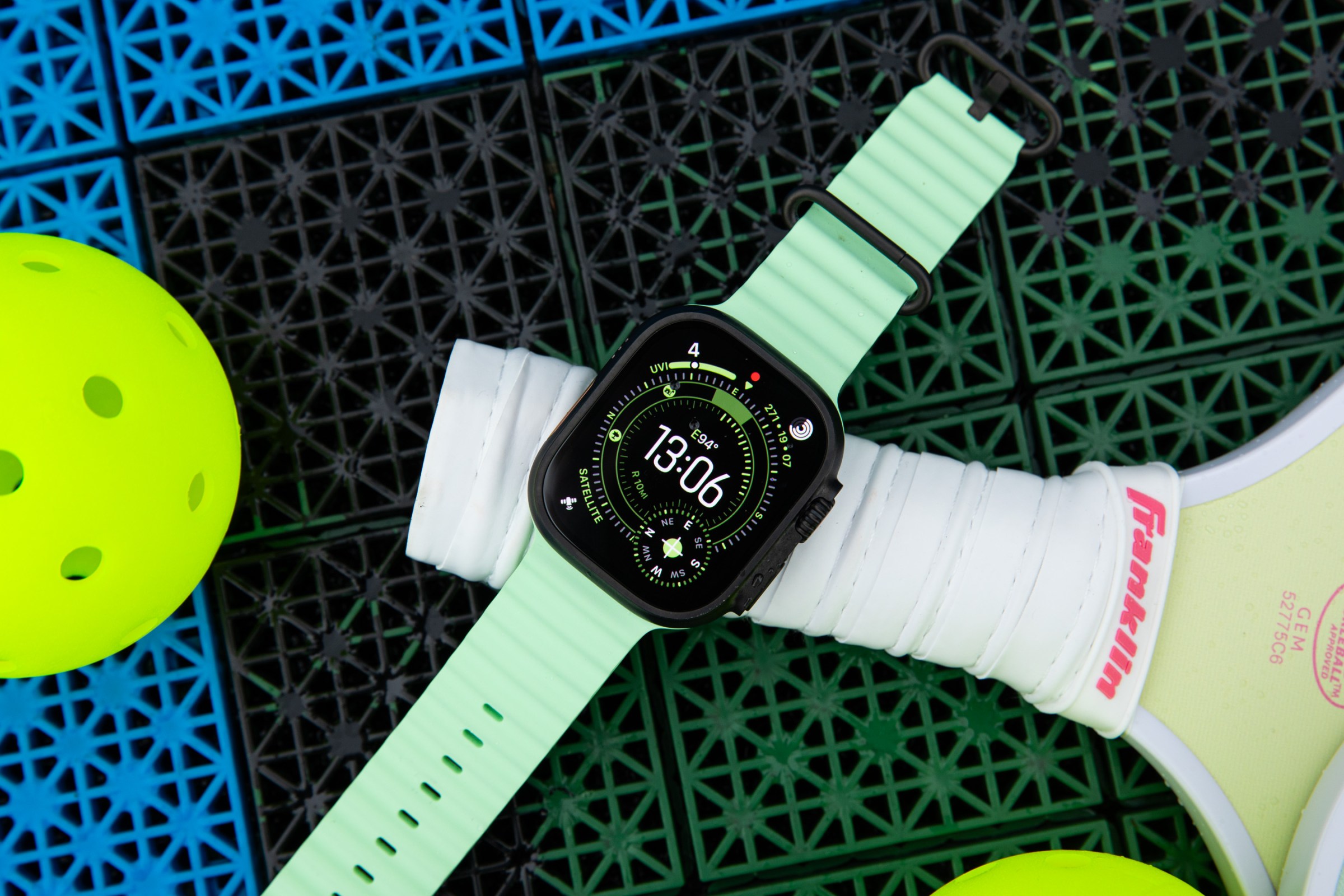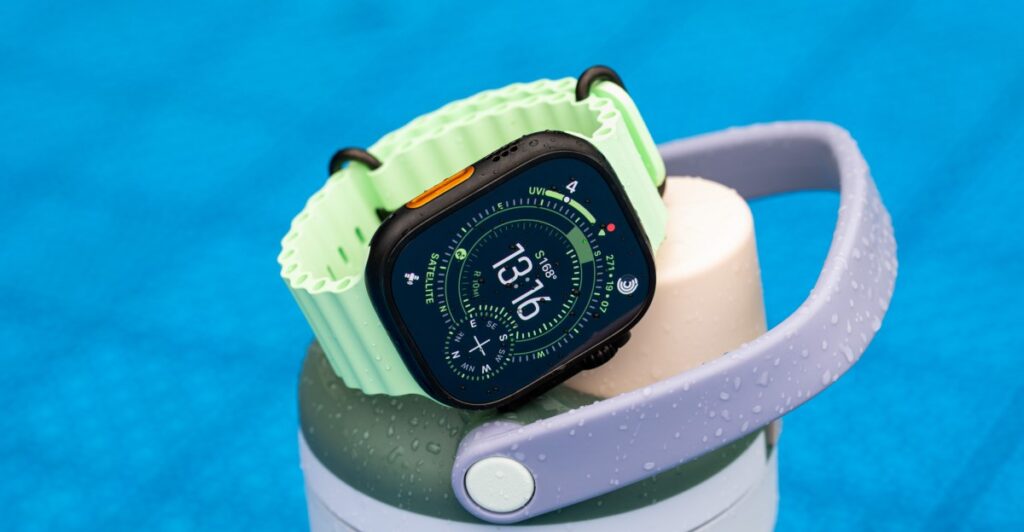Who is the $799 Apple Watch Ultra 3 for? The Garmin crowd? I can already hear Garmin fans cackling from whatever distant mountain they’re hiking on. The gadget nerd who simply must have the best-of-the-best smartwatch? I’m 99.9 percent sure those folks already have an Ultra 2. For three years, I’ve been pondering who the Ultra’s audience is, and for the Ultra 3, my answer is simple: anyone who wants one but doesn’t have one yet.
The Ultra 3 doesn’t pack in a ton of updates — especially not compared to the entry-level Apple Watch SE 3. The screen is marginally larger thanks to thinner bezels. Satellite and 5G connectivity have been added. Battery life is extended from 36 hours to 42 hours. WatchOS 26 adds neat features like the wrist-flick gesture, hypertension notifications, and an improved smart stack, though none of those are unique to this watch.

$779
The Good
- Even longer battery life
- Bigger display, thinner bezels
- Satellite and 5G connectivity
The Bad
- Most people likely won’t notice 5G or satellite improvements
Altogether, these aren’t mind-blowing updates, but the Ultra 3 has an undeniable aura that the Apple Watch Series 11 lacks. When the Ultra 3 was announced at the iPhone 17 event, I heard some nearby influencers and journalists grunt “Hell fuckin’ yeah!!!” under their collective breath. No one was doing that for the Series 11. But even for the biggest Ultra fans, there’s only a handful of scenarios where the upgrade is worth it.
Let me be clear: The Ultra 3 is better than the Ultra 2, which is better than the original Ultra. But the margin of improvement between each isn’t significant.
Take the display. It’s bigger than the previous Ultras. The bezel is thinner. The second hand on the always-on display now moves. You’ll only notice if, and only if, you happen to have an older model on hand for comparison. It’s not a dramatic leap like going from the Series 6 to the Series 7, or a Series model to an Ultra. I appreciate it, but I can’t say I’ve ever thought, “Holy moly, there’s no way I could ever go back to the Ultra 2’s screen. Pfft.”
Cellular connectivity is better. Downloads are a little faster if I choose to leave my phone behind or stream an album while on a run. The couple of times I did it, I had fewer snafus than on my LTE Ultra 2. Still, it’s easier to just download everything on Wi-Fi beforehand. I had one instance of severe battery drain on 5G, but it was likely due to reviewer error, as I haven’t been able to replicate it.
Adding satellite text messaging, location sharing, and emergency calling is neat, but whether it’s useful to you depends on a few factors. In the past three weeks, I’ve visited three mountains and dense state forests in New Jersey and upstate New York. I picked each because AllTrails and Google searches all said that reception was craptacular. I warned my loved ones what I was doing, schlepped myself several miles into the wilderness, and found that at no point did I ever fully lose cellular coverage. So, the support is there, but I will need to update this review once I can get fully off-grid during an upcoming trip.
You can at least run through demos where you practice connecting to a satellite. However, using satellites for communication is strictly limited to circumstances when there truly is no other way to communicate. While I couldn’t try text messaging or location sharing, I did get a walkthrough of emergency satellite SOS at Apple Park. It worked as intended. This sort of testing can get tricky. Apple had us do a controlled walkthrough for emergency SOS as it’s unethical to call in false 911 requests. No editor would ask me to actively put myself in harm’s way for a review, either. So all I can truthfully say is that, in my neck of the woods — and hiking ability — I’ve had difficulty finding a spot where satellite is something I need.
This might not be true for you! My spouse’s grandparents are from rural Maryland. To get a single bar of service, you have to find a particular walnut tree on the farm and stand just so with an arm outstretched. Whenever we visit, satellite texting on our iPhones has come in clutch. In that type of community, satellite SOS on a smartwatch might offer extra peace of mind. (I’ll be sure to test how satellite messaging works there next time I visit for Thanksgiving.)
As for experienced thru-hikers? You might get away with a short weekend excursion without carrying a battery pack, but for lengthier trips, I’m unconvinced the Ultra 3’s battery life is improved to the point where you can confidently ditch an In-Reach device or satellite phone. Again, the Ultra 3 can only call for emergency SOS, send texts, and share your location. An In-Reach can get you weather forecasts, route tracking, navigation, and much longer battery life. If you’re not a weekend warrior, Satellite SOS on the watch feels more like a nice-to-have backup than a primary means of off-grid communication.
This year was the first time Apple has ever increased its battery life estimates for both the Ultra and the Series watches. But where I found the Series 11’s improvements modest, I’ve been pleased with the bump I’ve gotten on the Ultra 3.
When I went to cover Meta Connect, I left my hotel room with 100 percent battery on the Ultra 3 at around 8:45AM on a Tuesday. I then had to field multiple notifications, logged more than 26,000 steps, recorded a 40-minute GPS run, tracked two nights of sleep, and took a 6.5-hour plane ride home. I got home roughly 60 hours later on Thursday evening with 15 percent battery left. I then turned on low-power mode, went about my evening, slept, and woke up the next morning with about 5 percent left, just shy of the 72-hour mark. I consider that medium usage, but that’s still impressive. Since then, I’ve gotten between 60–70 hours on a single charge — up from the 48–55 hours I’ve generally gotten on the Ultra 2.
As for charging speeds, I find a top-up while showering does the trick. One morning, I hopped in the shower at 6:44AM with 15 percent battery left. By the time I was done getting ready at 7:23AM, the watch was at 55 percent. I went about my day, slept through the night, and recorded a 30-minute run the next morning before plopping it on the charger while I got ready.
Who should get an Ultra 3?
Everyone with a perfectly good Ultra 2, read my lips: Don’t upgrade. Folks with an original Ultra, the main question for you is: How intrigued are you by gestures like double tap and wrist flick? I personally find those features to be convenient enough to be worth the expense. But if you’re not excited by them, save your moola.
Say you’re a weekend warrior who has resisted buying an Ultra so far. How often do you go off-grid? How’s cellular service where you live? If the answer is “not often” and “pretty great,” consider keeping an eye on Ultra 2 sales while inventory lasts. But if you’re someone who wants an Ultra, hasn’t bought one yet, and goes off-grid enough that the extra connectivity buys you some peace of mind? This watch is for you.
Agree to Continue: Apple Watch Ultra 3
Every smart device now requires you to agree to a series of terms and conditions before you can use it — contracts that no one actually reads. It’s impossible for us to read and analyze every single one of these agreements. But we started counting exactly how many times you have to hit “agree” to use devices when we review them since these are agreements most people don’t read and definitely can’t negotiate.
You can only use the Apple Watch Ultra 3 with an iPhone. That means you’ll have already agreed to the iPhone’s terms of service and privacy agreements. Using optional services like Apple Pay, Apple Music, or Fitness Plus with your Ultra 3 will also come with their own agreements. Using the Health app also comes with its own terms and conditions.
If you choose to enable cellular service, you’ll also have to agree to your carrier’s terms. If you add any third-party apps or integrations, you must also agree to those individual terms and privacy policies.
Specific to the Apple Watch, you must agree to the following:
Some features, like EKG or blood oxygen monitoring, may also require you to disclose your location data, as it depends on local regulatory clearances.
Final tally: one mandatory agreement plus any mandatory agreements for your iPhone. Several, several optional agreements.
Read the full article here
